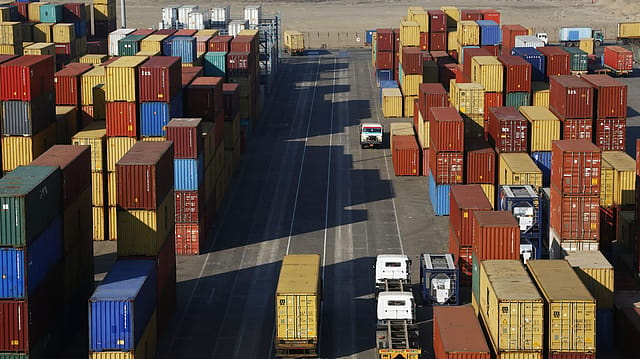Is India’s growth story entering a new phase as private investment finally begins to take the lead?
ADVERTISEMENT

India’s GDP for Q4 FY2024–25 surprised on the upside, growing at a brisk 7.4% year-on-year. Full-year growth came in at 6.5%, reinforcing the resilience of the Indian economy despite global headwinds, elevated interest rates, and geopolitical uncertainty. The growth narrative was driven by robust private consumption and investments, underlining confidence in domestic demand, supported by easing inflation and favourable rural conditions.
Private Final Consumption Expenditure (PFCE) grew by 7.2% in FY2024–25, significantly outpacing overall GDP growth. The momentum is likely to continue this fiscal year, buoyed by increasing disposable incomes (as income tax relief measures come into effect), easing inflation, better expected rainfall, and falling policy rates.
What came as a relief is that, after years of being led primarily by the public sector, investment and capex are beginning to see broader participation. Gross Fixed Capital Formation (GFCF) rose by a strong 9.4% in Q4 FY2024–25, up from 5.2% in the previous quarter. While full-year GFCF growth was more modest at 6.7%, the Q4 acceleration may suggest green shoots of a private capex revival.
This is particularly notable given that government capital expenditures were relatively restrained. Utilisation was 79.7% of the budgeted amount by February 2025, lower than last year’s 84.8%.
India needs investments to create economic activity and jobs. However, global uncertainties—and more recently, changing tariffs in the US—have weighed on sentiment, as global investors flee to safer havens and businesses hesitate to commit to long-term investments. So far, the government has largely shouldered the responsibility of driving capex by focusing on improving physical and digital infrastructure. There are expectations that these investments will eventually crowd in private investments. The high numbers in Q4 may be a good sign, and all eyes will be on the momentum in the current fiscal year.
December 2025
The annual Fortune 500 India list, the definitive compendium of corporate performance, is out. This year, the cumulative revenue of the Fortune 500 India companies has breached $2 trillion for the first time. Plus, find out which are the Best B-schools in India.
The impact of global risks led to a moderation in exports to 3.85% in Q4, as uncertainties in the global trade landscape weighed on demand. The impact on merchandise was higher than on services. Nonetheless, exports for the full fiscal year grew by 6.3%, an improvement over 2.2% in FY2023–24.
Looking at trade positively, the services trade surplus helped India offset the merchandise trade deficit in FY2024–25. The latest data show that the services-to-merchandise export ratio stands at 47:53, up from 38:62 in 2019. Even in merchandise, the relative share of high-value-added manufacturing goods in total exports has risen consistently. In fact, exports of electrical and electronic goods, including semiconductors, reached an all-time high in FY2024–25. While the global environment remains uncertain, India’s diversified export base—across services, electronics, and pharmaceuticals—continues to provide a buffer.
Gross Value Added (GVA) grew by 6.8% in Q4, supported by strong growth in the agriculture sector, largely driven by a favourable rabi harvest and timely monsoons. Construction emerged as one of the most dynamic sectors, growing at 10.8% in Q4. Amidst muted public capex, renewed activity from private developers and infrastructure players is notable.
Services, which account for close to 54% of GVA, remained resilient with 7.2% growth. However, manufacturing grew at a modest 4.5%, constrained by slowing global demand, a shifting trade landscape due to tariff uncertainties targeting merchandise, and inventory adjustments. This is also impacting the services sector, as growth has slowed compared to recent years and may continue to remain subdued. Growth in the services sector is key to maintaining urban demand, and any slowdown could further pressure already stagnant urban consumption. Quick interventions by the government—such as signing FTAs with several countries—could help India navigate trade and investment uncertainties more effectively. Increased emphasis on R&D and innovation will also help Indian manufacturing move up the global value chain, signs of which are already emerging.
As India enters FY2025–26 with strong tailwinds such as easing inflation, reviving private investment, rebounding FDI, and a record ₹2.7 trillion dividend transfer from the RBI—providing the government with greater fiscal space for growth-supportive spending—India is expected to grow at 6.7%, retaining its status as one of the world’s fastest-growing major economies driven by domestic demand.
Views are personal. The author is Economist, Deloitte India
